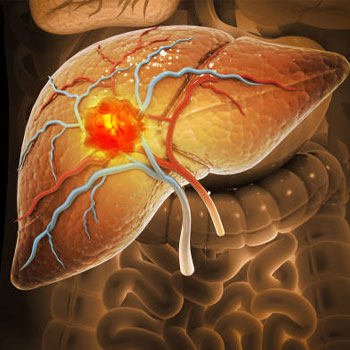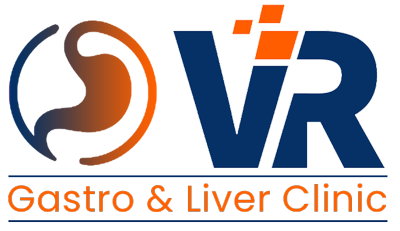What is jaundice
Jaundice is a medical condition characterized by the yellowing of the skin, mucous membranes, and the whites of the eyes. This yellow discoloration is due to elevated levels of bilirubin, a yellowish pigment produced during the normal breakdown of red blood cells. Although jaundice itself is not a disease, it is a symptom that may indicate an underlying health issue. Understanding the causes, symptoms, and treatment options for jaundice is essential for proper management and prevention of potential complications.
What are the main causes of jaundice?
Jaundice occurs when there is an imbalance in the production and clearance of bilirubin. The causes of jaundice can be categorized into three main types:
1. Pre-hepatic jaundice
This type occurs before bilirubin reaches the liver. It is typically caused by conditions that increase the breakdown of red blood cells (hemolysis), leading to an overproduction of bilirubin. Common causes include:
- Hemolytic anemia
- Malaria
- Sickle cell disease
- Thalassemia

2. Hepatic Jaundice
This type is due to liver-related issues where the liver is unable to process bilirubin effectively. Causes include:
- Hepatitis (viral, alcoholic, autoimmune)
- Cirrhosis
- Liver cancer
- Gilbert's syndrome
- Drug-induced liver injury
3. Post-hepatic jaundice (obstructive jaundice)
This type occurs when bilirubin is processed by the liver but cannot be excreted properly due to a blockage in the bile ducts. Causes include:
- Gallstones
- Pancreatic cancer
- Bile duct strictures
- Cholangiocarcinoma (bile duct cancer)
What are the symptoms of jaundice?
The hallmark symptom of jaundice is the yellowing of the skin and eyes. However, other symptoms may vary depending on the underlying cause. Common symptoms include:
- Yellowing of the skin and eyes: The most recognizable sign of jaundice.
- Dark urine: Bilirubin excreted in the urine can cause it to appear dark or tea-colored.
- Pale stools: A lack of bilirubin reaching the intestines can result in pale or clay-colored stools.
- Itching: Bile salts that accumulate under the skin may cause intense itching.
- Fatigue: Feeling tired and weak is common with liver-related jaundice.
- Abdominal pain: Discomfort or pain in the upper right abdomen may be present, especially in obstructive jaundice.
- Weight loss and nausea: Unexplained weight loss, loss of appetite, and nausea are common symptoms in more severe cases.
If you are experiencing any of the above symptoms or suspect that you may have jaundice, consult Dr. Veera Abhinav Chinta to get the best jaundice treatment in vijayawada.
Diagnosis of jaundice
Diagnosing jaundice involves a combination of medical history, physical examination, and diagnostic tests. Key steps in the diagnosis process include:
1. Medical history
The doctor will inquire about symptoms, potential exposure to hepatitis, alcohol consumption, medications, and family history of liver disease.
2. Physical examination
A physical exam may reveal signs of liver enlargement, tenderness in the abdomen, or the presence of gallbladder disease.
3. Blood tests
These tests can measure bilirubin levels and liver function to determine the cause of jaundice. Common blood tests include:
- Liver function tests (LFTs): Assess liver enzymes, bilirubin levels, and proteins to evaluate liver health.
- Complete blood count (CBC): Helps identify hemolysis or infection.
- Hepatitis panel: Detects viral hepatitis infections.
- Imaging tests: Ultrasound, CT scan, or MRI may be used to visualize the liver, gallbladder, and bile ducts to identify blockages or abnormalities.
- Liver biopsy: In some cases, a liver biopsy may be performed to diagnose specific liver conditions, such as cirrhosis or cancer.
What kind of treatments are available for jaundice in vijayawada?
Treatment for jaundice depends on the underlying cause. Once the cause is identified, appropriate treatment can be initiated:
Addressing Underlying Causes
Effective treatment of jaundice involves identifying and addressing the underlying cause. For liver disorders treatment in vijayawada, medications, and lifestyle changes may be recommended. In cases of biliary tract obstruction, surgical intervention may be necessary.
Phototherapy
Neonatal jaundice, commonly seen in newborns, is often treated with phototherapy. This involves exposing the baby's skin to a specific type of light that helps break down excess bilirubin.
Blood Transfusion
In severe cases of hemolytic disorders, where excessive red blood cell destruction is the primary cause, blood transfusions may be necessary to replace the damaged cells and reduce bilirubin levels.
Prevention of jaundice
Preventing jaundice involves addressing the risk factors associated with the underlying causes. Some preventive measures include:
- Vaccination: Getting vaccinated against hepatitis A and B can reduce the risk of viral hepatitis-related jaundice.
- Healthy lifestyle: Avoid excessive alcohol consumption, maintain a healthy weight, and follow a balanced diet to reduce the risk of liver disease.
- Regular check-ups: Regular medical check-ups can help detect liver problems early and manage conditions that may lead to jaundice.
- Safe practices: Practicing safe sex, avoiding sharing needles, and following good hygiene can prevent infections that may cause jaundice.
What are the benefits of early detection?
Prevention of complications
Early detection and treatment of jaundice can prevent complications associated with elevated bilirubin levels. Severe jaundice left untreated can lead to brain damage in newborns and complications in adults.
Improved quality of life
Managing the underlying causes of jaundice can significantly improve the patient's quality of life. Effective treatment can alleviate symptoms and enhance overall well-being.
Preventing recurrence
Addressing the root causes of jaundice helps in preventing its recurrence. Patients with liver disorders or biliary tract issues can work with healthcare professionals to manage their conditions and reduce the risk of jaundice reoccurrence.
Conclusion
Jaundice is a visible sign of an underlying health issue, and prompt diagnosis and treatment are crucial for a positive outcome. Understanding the causes, recognizing symptoms, and seeking medical attention early can lead to effective management and a healthier life. Remember, if you suspect jaundice or experience any related symptoms, consult with the best jaundice doctor in vijayawada for a proper diagnosis and personalized treatment plan. Early intervention can make a significant difference in the course of the condition.
Take the first step towards relief and book an appointment with a leading hepatologist and gastroenterologist in vijayawada. Experience the best treatment for all types of liver diseases with Dr. Veera Abhinav Chinta.
